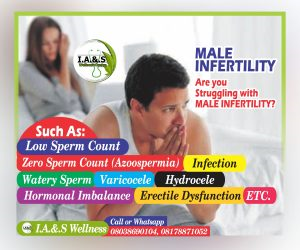NATURAL TREATMENT OF GLAUCOMA IN NIGERIA
Glaucoma is a group of eye conditions that damage the optic nerve, which is crucial for good vision. This damage is often caused by abnormally high pressure in the eye, known as intraocular pressure (IOP). If left untreated, glaucoma can lead to irreversible vision loss or blindness.
TYPES OF GLAUCOMA
Primary Open-Angle Glaucoma (POAG)
Description: The most common form of glaucoma. It occurs when the drainage canals in the eyes become clogged over time, leading to increased eye pressure.
Symptoms: Gradual loss of peripheral vision, often unnoticed until significant vision loss occurs.
Risk Factors: Age, family history, ethnicity (more common in African Americans and Hispanics), and high intraocular pressure.
Angle-Closure Glaucoma
Description: Also known as acute glaucoma, this form occurs when the iris is too close to the drainage angle in the eye, which can suddenly become blocked, causing a rapid increase in eye pressure.
Symptoms: Severe eye pain, nausea, vomiting, blurred vision, and halos around lights. This is a medical emergency.
Risk Factors: Age, Asian ethnicity, farsightedness, and a family history of angle-closure glaucoma.
- Normal-Tension Glaucoma
Description: In this type, optic nerve damage occurs even though the eye pressure is within the normal range.
Symptoms: Similar to primary open-angle glaucoma, but the cause of optic nerve damage is not well understood.
Risk Factors: Family history, low blood pressure, and Japanese ethnicity.
Congenital Glaucoma
Description: A rare form that occurs in infants and young children due to abnormal development of the eye’s drainage system.
Symptoms: Cloudy eyes, excessive tearing, light sensitivity, and enlargement of one or both eyes.
Risk Factors: Genetics, family history of glaucoma.
Secondary Glaucoma
Description: This type results from another medical condition, such as an eye injury, inflammation, tumor, or advanced cataracts.
Symptoms: Can vary depending on the underlying cause but may include symptoms similar to other types of glaucoma.
Risk Factors: Underlying eye conditions, certain medications (like corticosteroids), and previous eye surgery or injury.
CAUSES AND RISK FACTORS
- High Intraocular Pressure: The most common cause of glaucoma.
- Age: People over 60 are at higher risk.
- Family History: Genetics play a significant role.
- Ethnicity: African Americans, Hispanics, and Asians are at increased risk for different types of glaucoma.
- Medical Conditions: Diabetes, high blood pressure, heart disease, and other systemic conditions can increase the risk.
SYMPTOM
- Open-Angle Glaucoma: Often asymptomatic until significant vision loss occurs. Gradual loss of peripheral vision is common.
- Angle-Closure Glaucoma: Symptoms include sudden eye pain, blurred vision, headache, nausea, and rainbow-colored halos around lights.
DIAGNOSIS
- Eye Examination: Includes measuring intraocular pressure (tonometry), inspecting the drainage angle (gonioscopy), evaluating optic nerve damage (ophthalmoscopy), and testing peripheral vision (visual field test).
- Imaging: Optical coherence tomography (OCT) and other imaging techniques may be used to assess the optic nerve and retina.
GLAUCOMA TREATMENT
OTHER TREATMENT WE OFFER


